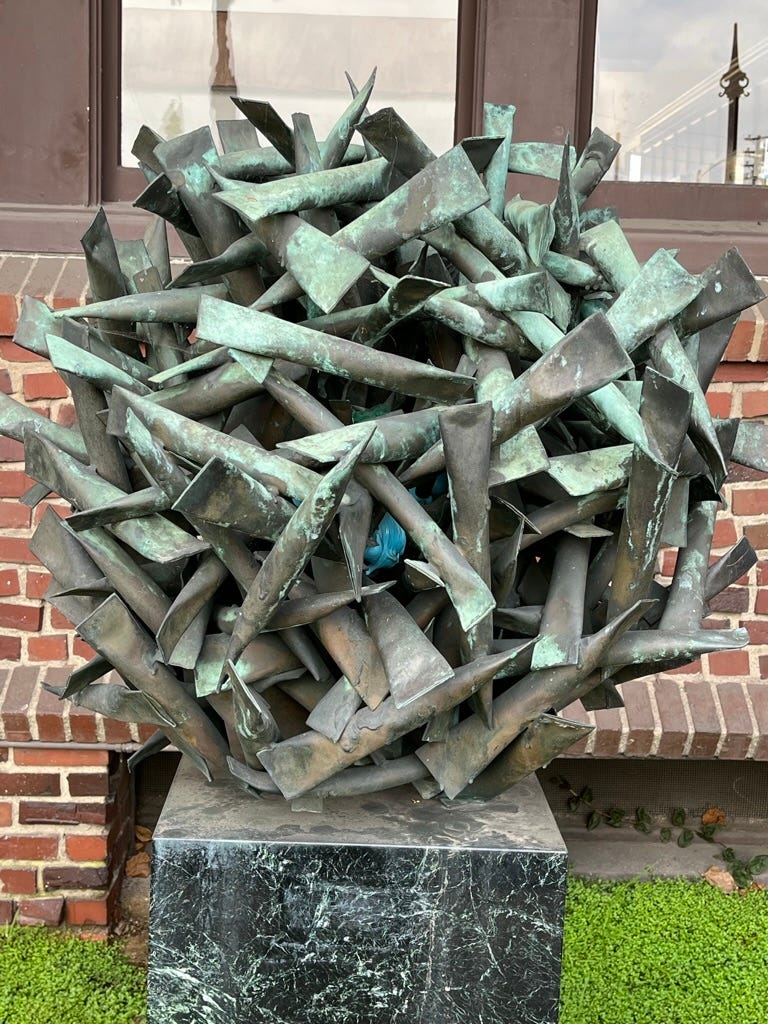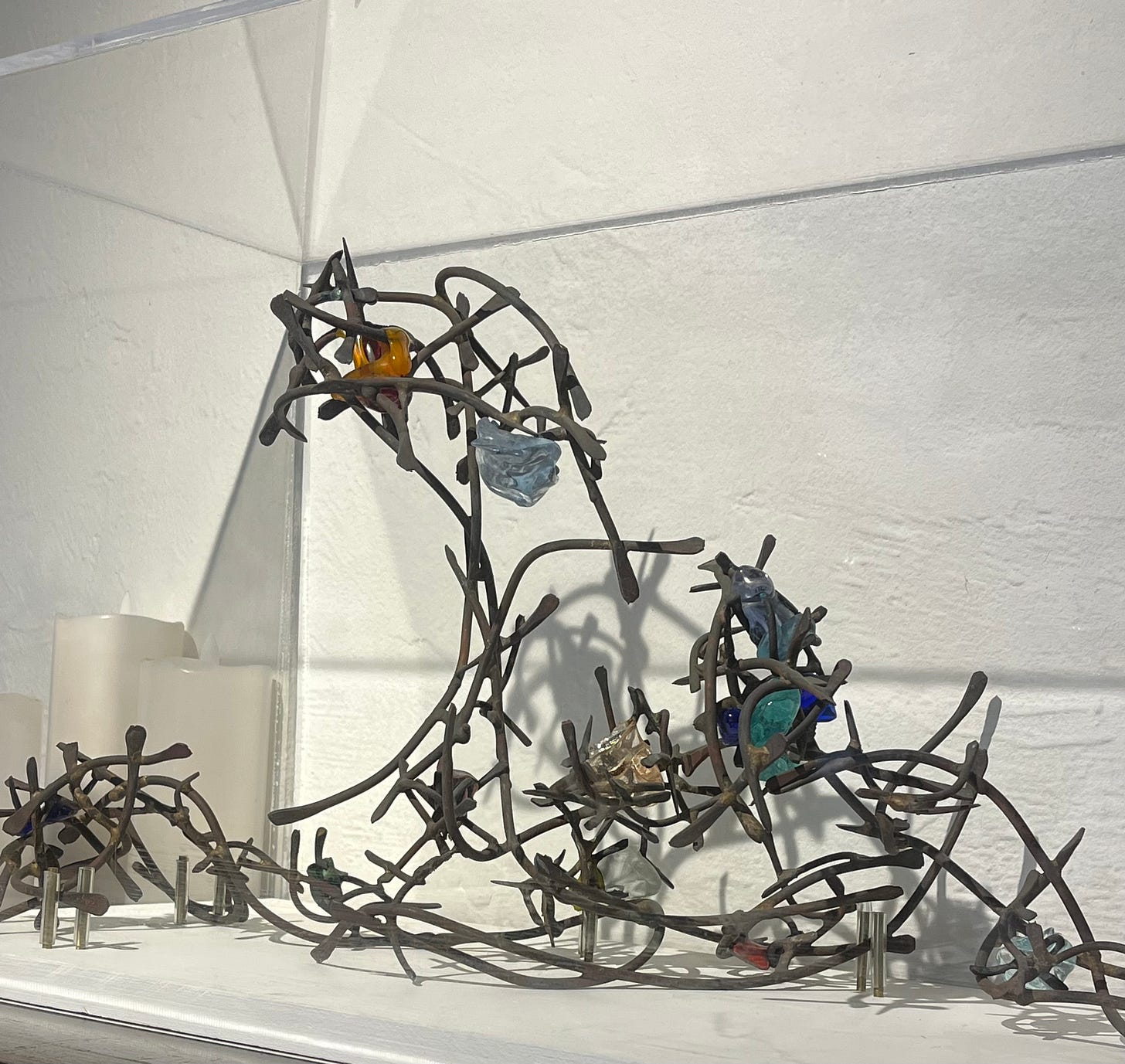Free Art Friday: Claire Falkenstein’s Sculpture—Copper, Venetian Glass, Water and Air
Clare Kunny, President of Art Muse LA & Miami
Claire Falkenstein’s sculpture is a prickly extension of nature. By prickly, I mean her work is innovative and experimental in a way that defies the norm. The dynamic forces in nature are her inspiration more than the history of the medium in which she works. The armature of her mature works from the southern California period (1963 to 1997) is made of copper tubing that she clipped and bent to be woven together. A sense of movement is always present in the sculpture as air and water circulate through and around a mesh of copper that is often embellished with bits of Venetian glass fused within the sculptural body. Giant bur balls or cresting waves breaking on the shoreline come to mind when encountering one of Falkenstein’s California sculptures.
A highlight of the West LA Outdoor Sculpture guide is the deep dive into Claire Falkenstein’s, Point as a Set #25 (1970), installed in the Franklin D. Murphy Sculpture Garden. In this exploration of Falkenstein’s sculpture, you’ll find a 360-degree video of the spherical Point as a Set #25 made of interlocking copper tubes. Its 76-inch diameter makes it look something like an enormous bur ball that fell from a nearby tree. The sculpture is part of a serial investigation Falkenstein made into mathematics and nature, inspired by her desire to demonstrate visually part of Einstein’s theory of the expanding universe. Falkenstein’s series of Point as a Set sculptures are composed of U-shaped copper tubing components that vary from round to flat and thick to thin. All the sculptures in the series are ball-shaped with various sizes and densities of the interlocking copper tubes. The Point as a Set sculptures flow and morph as light and air circulate through and around the copper sphere.
Down the coast from Los Angeles is a treasure trove of Falkenstein’s art at the Long Beach Museum of Art. Included in the collection is the elegant Point as a Set #16 (1964). Smaller than the west LA sculpture, #16 incorporates bits of Venetian glass tucked into the copper tubing. Not only does the glass add color, but it draws the eye into the interior and back around to the surface of the copper sphere. Placed outside the museum in a small garden, Falkenstein’s sculpture is in good company adjacent to the steel and bronze piece Solea (1968) by Peter Voulkas, and a whimsical ceramic Flower Tree (2008) by Matt Wedel.
The centerpiece of Falkenstein’s work in the Long Beach Museum of Art collection is Structure & Flow Fountain #3 (1968-72). Originally it was commissioned by Dr. Louis Heyn who gave it to the Long Beach Museum of Art in 1972. To create the monumental fountain, Falkenstein made a small maquette of metal and glass to understand the structure of the fountain and determine the placement of colored glass. Look for this piece in the house, placed on a mantel on the first floor. The maquette is delicate with linear metal elements embedded with colored glass pieces. Outside you’ll find the fountain. In the fountain the metal elements of the maquette are transformed into heavy copper tubing where water flows. Visually the water continues the line of the copper tubes as it courses through the tubes. Installed against the backdrop of Pacific Ocean, the fountain has the energy of a wave crashing on the shoreline—a perfect setting to see her art responding the energy of nature.
Falkenstein’s compositions in the 1960s and 1970s involved the repetition of similar forms to build up an individual piece. She thought of structure as a point of communication of the flow of joined “signs”. This concept resulted in Falkenstein’s unique sculptural language that first appeared in the Point as a Set series that was followed by her series of four Structure and Flow fountains.
Join Art Muse LA on Oct. 12th for a field trip to visit the Orange County Museum of Art and the Long Beach Museum of Art. Make your reservation HERE.







